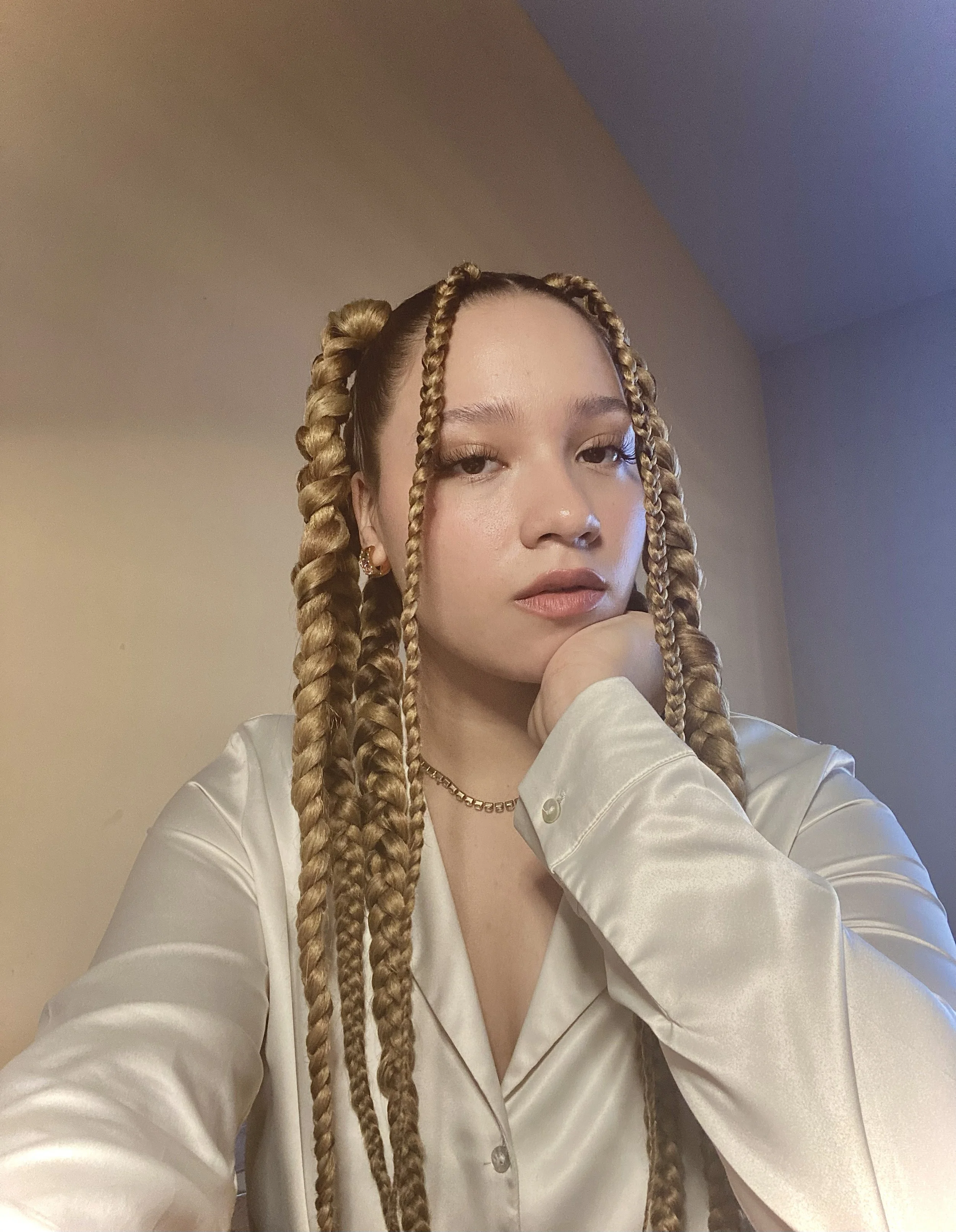
THE GRAMMAR OF COLLAPSE
On what it means to make art from the ruins, and still call it living
by Marie Anne Arreola
Detail of artwork by Aluu Prosper Chigozie
The street isn’t silent. It only feels that way when the algorithm skips a beat, when the sky hums overhead like a glitch in the stream, when I walk and remember I am a body—not just a profile—visible, fragile, surrounded by other breakable things. Sometimes the light catches my cheek in the reflection of a storefront window, and I think: this is me. I am legitimate. I didn’t create a thing, but I inhabit it.
Culture feels like a pot of new emergencies—simmering, blistering, constantly asking to be stirred.
I grew up in a border city, where silence was always a kind of code-switching—bilingual, half dust, half signal. Sonora, a state where fences aren’t just physical lines but psychic ones. There, I learned early that language is not merely communication. It is adaptation. A survival instinct. It bends around wire fences, flattens itself against legal frameworks. It is the breath between Spanish and English, the syllables that slip in translation and refuse to be fully caught. My childhood was shaped by that tension: a place where belonging is never given, only earned through constant negotiation.
This experience echoes the broader realities of borderlands worldwide, where cultural and political boundaries impose limits on identity and expression. Scholars such as Gloria Anzaldúa have long described this space as “la frontera,” a liminal zone of hybridity and tension. In Borderlands/La Frontera, Anzaldúa writes, “I am a border woman. I grew up between two cultures... I am a mestiza, a crossblood.”
Her work underscores that survival in such spaces requires fluency in ambiguity, the art of living in and between worlds.
I watched friends burn out like cassette tapes, worn down by too much rewind. That was before the mechanisms failed. Before time began to bite back.
Now, I write poems like border crossings. They dissolve boundaries and resist clean translation. They ask questions in lowercase and never wait for answers. They braid the sacred with the digital, the domestic with the mythic.
In recent years, the cultural fallout of political crises—mass migration, environmental disasters, the pandemic—has further fractured what it means to belong and be heard. As NPR reported in 2023, border communities endure “layered violence,” where systemic neglect intersects with personal trauma, yet “creativity and community remain acts of resistance.” This resilience is a form of cultural grammar: a way to narrate survival without surrendering to despair.
I’ve become a chronicler of thresholds; feminine, oneiric, always slightly undone. In the art world, I look for the red knuckles of prizefighters. For barbed wire baked into frosted cakes. I trace the outlines of transgression. I ask: What laws have I broken without being caught? What pulls your gaze in a time when attention is currency?
Is culture the shape we make in the air when we resist? Can we prefigure liberation, as if resistance were not just a performance, but a blueprint?
The border taught me that survival is never static. It is movement. It is the constant weaving between worlds, the art of holding multiple identities that never fully fit the frame. This is the grammar of collapse—a language born in the ruins but spoken in the present tense.
In the online forums of the dead, real or imagined, I read the dispatches of those yearning for precision in their undoing. One voice types, “I’m trying to listen, to let go of being heard.” Another answers: “Hold fast to death, for if death dies, death is a broken-winged bird that cannot fly.”
These aren’t metaphors. They are liturgies. Instructions for those of us who have lived through collapse and found a strange kind of grace in the wreckage.
What does a people look like after surviving every ending?
What grammar do we write in, having grown up always on camera?
We’re in a room, drinking legacy-brand cocktails. We forget, then remember, that everything we consume is engineered for both pleasure and disappearance. We are dancing beneath violet bar lights, talking about Clarice Lispector and Beyoncé. We are building something. We are undoing something. We say we run the world, but we know who profits from the illusion of our power.
We stitch resistance into red patches from Jo-Ann Fabrics. We love you, Jo-Ann. And we are never going to be quiet. We are expressive and strategic in our artificial cages, in our aestheticized restraints. We want surveillance to witness us in bloom. We want the archive to remember us as difficult, poetic, and free.
The global rise of surveillance culture, as documented by scholars like Shoshana Zuboff in The Age of Surveillance Capitalism, shows how digital life reshapes our identities into data points. Yet within this, artists—particularly those from marginalized communities—turn visibility into a weaponized act of affirmation. To be seen fully is to resist erasure.
To become mayor of this ruin, I did yoga in the dark gardens of capitalism. I laughed with ghosts. My politics is not only survival, it is intimacy. It is the radical act of feeling in an era that numbs, of writing in an era that consumes. It is the refusal to be easy. It is waking to no change—just light stuck to the windowpane. Still, we stitch. We whisper through screens. We kiss each other’s foreheads in dreams.
Yes, culture is a pot of new emergencies. But it is also the smoke that rises from that pot. The songbird between silences. The dance in the burning house.
The thread that says: we were here. We saw you. We lived.
Marie Anne Arreola is a bilingual poet and cultural editor whose work dissolves boundaries between language, form, and identity. Her creative practice explores digital femininity, altered states, memory, and identity through a poetic lens shaped by both the internet and introspective voices. Her work has appeared internationally in Torrey House Press, Meniscus Literary Journal, San Diego Poetry Annual, WILDSOUND International Poetry Festival, and elsewhere. She is a two-time finalist for the Francisco Ruiz Udiel Latin American Poetry Prize from Valparaíso Ediciones and a 2024 recipient of the Young Poets Scholarship from the Gutiérrez Lozano Foundation.

